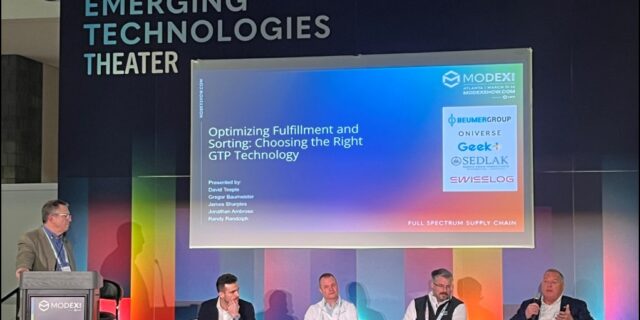Collaboration in the Healthcare Value Chain: Lessons from the Grocery Industry
November 17, 2014 Topics: UncategorizedThere’s a famous quote among football coaches: “You are getting better or you are getting worse. You never stay the same.” That sentiment certainly applies to the healthcare supply/value chain, as evidenced at the Health Industry Distribution Association (HIDA)’s “Streamlining Healthcare” conference in Chicago last month. While it’s clear there is concern and frustration regarding the uncertainties created by the political scene and rapidly changing regulatory environments, energy regarding change is apparent everywhere in healthcare distribution. The charge of that energy, whether negative or positive, is a matter of individual interpretation.
One “change” theme featured at the conference is collaboration. Webster’s defines collaboration as “the act of working with another person or group to achieve or do something.” Considering the well documented and historically limited trust among healthcare value chain participants, all of the talk around collaboration is certainly refreshing. Collaboration is intricately linked with supply chain maturity, taking on increasing importance in the role of supporting the “linkages” in the chain.
Years ago, I had the fantastic opportunity to work with several leaders in the grocery industry through the Grocery Manufacturers Association to participate in various ECR (Efficient Consumer Response) activities. Our team’s specific area of focus was Collaborative Planning, Forecasting and Replenishment (CPFAR), with collaboration being a deliberate goal of our activities. One reason for this emphasis is that collaboration is hard – it requires significant communication, a common purpose, and processes that enable organizations, not just individuals to “collaborate.”
To help step a combination of organizations toward collaboration, we invented a simple “Show, Share, Optimize” framework. Initially, we helped organizations “show” relevant data to one another. For example, a buyer might show a supplier a product forecast while the supplier offers (shows) a production schedule. The show step helped provide visibility, opened lines of communication and began the process of building inter-organizational trust. This show step, however, was inherently reactionary because it didn’t include much “give and take” – the communication involved explanations of what was shown, but no recommendations around changes.
Once the organizations got comfortable with one another’s data, their collaboration matured to the “share” stage. Here recommendations were made across the organizations to yield improvements. Sometimes simple changes in schedules, sequences, quantities or structures could provide great benefit to one or more of the collaborating organizations. The share stage included recommendations and resulting actions or adjustments leading to a purer form of collaboration, more robust communication and deeper inter-organizational trust. Collaborating at the share level takes commitment, a common purpose and hard work.
The nirvana stage of the framework was “optimize.” As an operations research purist, the word “optimize” admittedly always carries some algorithmic baggage for me. That said, the optimize stage represents a level of maturity where firms use processes and tools to “optimize” across their supply/value chains. Here organizations clearly begin to work as one, exhibiting efficient communication and deep inter-organizational trust.
Of course, even years ago, the grocery industry had the benefit of data standards, strong profit motives and several other influencing factors that enabled collaboration opportunities. As healthcare value chain partners navigate new avenues of collaboration to stay vital in the industry, their efforts will get easier as data standards and common goals become more pronounced. Whether you’re talking about groceries or medical supplies, collaboration in the supply/value chain is clearly here to stay!
Sedlak is an industry-leading consulting firm specializing in distribution-intensive operations and end-to-end supply chain strategy development. We hope that you find the insights contained in this series helpful to your business. If there is any way we can be of assistance, please feel free to contact us by filling out the form below.





